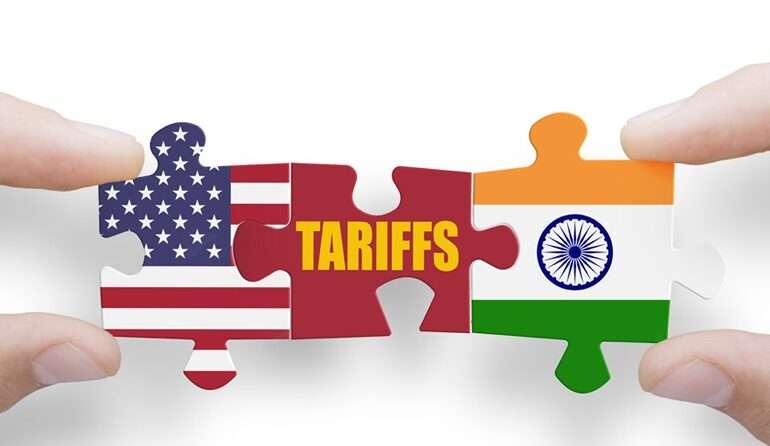
Publisher’s note: Tariffs, trust, and the tightrope of Indo–U.S. trade
By: Dr. Avi Verma
Former President Donald Trump’s abrupt declaration of a 25% blanket tariff on Indian imports has sent ripples through diplomatic circles, financial markets, and strategic corridors alike. For a bilateral relationship long hailed as one of natural allies, the move is less a rupture than a jolt—a stress test of economic trust and long-term resilience.
A Transactional Tremor in a Strategic Tiescape
Whether viewed as strategic coercion or economic recalibration, the tariff speaks to Trump’s longstanding preference for pressure diplomacy over multilateral consensus. The message is clear: trade leverage remains central to his foreign policy calculus, even at the cost of unsettling allies.
India’s response so far has been measured but unmistakably firm. The Ministry of Commerce called the move “disproportionate and counterproductive,” underlining India’s role as a strategic defense and technology partner. Behind closed doors, discussions are reportedly underway on potential retaliatory tariffs targeting select U.S. agricultural and tech goods.
Markets Reflect Anxiety on Both Sides
 U.S. Markets React:
U.S. Markets React:
The Zeus Index—a composite tracking Indo–U.S. trade-exposed sectors—dropped 2.4% intraday. Major U.S. retailers and pharmaceutical importers that rely on Indian supply chains saw markdowns, while energy and aerospace stocks moved cautiously.
 Indian Markets Respond:
Indian Markets Respond:
- BSE Sensex fell 1.7%, led by slumps in textile and auto stocks.
- Nifty Pharma Index dipped over 3%, as generic drugmakers braced for tighter margins.
- The rupee slid slightly against the dollar amid forex concerns over disrupted trade flow.
The Scope of the Tariff—and the Stakes
Although Trump’s team has yet to clarify the full list of affected goods, trade analysts believe the net will likely cover key Indian exports such as textiles, auto components, processed foods, and select electronics. With Indo–U.S. trade crossing $200 billion in 2024, such a sweeping action threatens to disrupt critical sectors and stall momentum in joint ventures, including innovation corridors, energy projects, and platforms like iCET (U.S.–India Initiative on Critical and Emerging Technology).
A Test of Maturity, Not a Breakdown
Despite this shockwave, history reminds us that Indo–U.S. relations have weathered more than tariffs—be it H1B visa battles, WTO disputes, or disagreements on climate policy. What has endured is a deeper convergence in democratic values, technological ambitions, and global responsibility.
The question now is whether both governments will escalate tensions or recalibrate through diplomacy, mutual interest, and economic pragmatism.
At IndoUS Tribune, we believe this is not merely about trade—it’s about trust. Tariffs may test the ties, but they do not define them. The true strength of Indo–U.S. relations lies not in the headlines, but in the enduring bonds of commerce, innovation, and shared democratic purpose.
We commend the measured voices on both sides—business leaders, chambers of commerce, and diaspora advocates—who are working to de-escalate and reframe this moment as an opportunity for renewed dialogue.
We also join other Indian-American publications and community platforms in urging the Consulates General across the U.S.—including in Houston, New York, Chicago, San Francisco, and Atlanta—to maintain active outreach to stakeholders, small business owners, and trade associations impacted by these developments.
As always, IndoUS Tribune will continue to monitor, report, and analyze—because behind every policy shift are the lives and aspirations of millions who build bridges across the oceans every day.